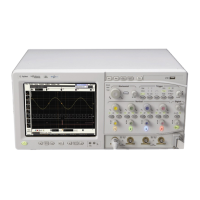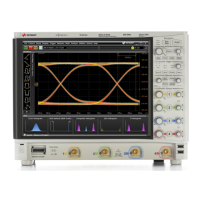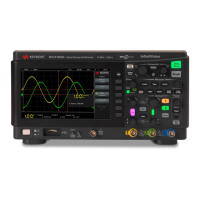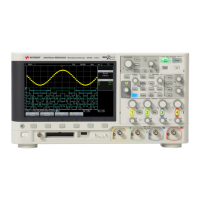Chapter 8: Theory of Operation
Acquisition Theory
157
Interface and GPIB Board (A21)
The Interface Board (A21) has three primary functions:
• Interface the acquisition board to the motherboard system controller.
• Implement miscellaneous oscilloscope functions, including an RS- 232 interface to the
front- panel keyboard, a 32- bit timer, and non- volatile RAM.
• GPIB remote control interface.
The GPIB Interface provides IEEE- 488.2 standard bus services for the oscilloscope. The
card interfaces the bus to the motherboard system controller, allowing the system
controller to receive and process GPIB commands and return data to the bus. The
circuit consists of three main components. The GPIB controller provides an interface
between the microprocessor system and the GPIB in accordance with IEEE 488 standards.
An 8- bit data buffer and 8- bit control line buffer connect the GPIB controller to the
GPIB bus. The GPIB is a 24-conductor shielded cable carrying 8 data lines, 8 control
lines, 7 system grounds, and 1 chassis ground.
Acquisition Board Interface The interface to the acquisition board consists of 16
data lines, 10 address lines, a R/W line, and read and write strobes. A second read
strobe is used for reading acquisition data; the address latches are not used when
this strobe is active. Three lines are used to indicate run, trigger, and interpolator
status; two control lines are used for trigger control and clocking.
There are two address ranges on the acquisition board; the first is used for reading
acquisition data, while the second is used to access status and control elements of the
board.
Miscellaneous System Functions An RS- 232 interface is used to communicate with
the front panel keyboard. The connector routes transmit and receive, power supply
bias and inhibit signals, and keyboard power to the keyboard. The interface
functionality is contained in the FPGA. The data rate is 19.2 KBaud, with 1 start
bit, 8 data bits (LSB first), and one stop bit, no parity. The keyboard itself has a
controller that transmits and receives data through this interface.
Non- Volatile RAM (NVRAM) on the oscilloscope graphics board provides high- speed
access to oscilloscope configuration settings.

